calsfoundation@cals.org
Crenshaw Site
The Crenshaw Site was a large village and ceremonial center occupied from about AD 700 to 1400 along the Red River in Miller County in southwestern Arkansas; the site is listed on the National Register of Historic Places. The large size of the site (estimated at approximately eighty acres), along with limited archaeological investigations, hampers reconstruction of the site’s cultural history. The prevailing archaeological interpretation of the site is that it was first occupied by the Fourche Maline culture (AD 700–900) and developed into a significant village. Numerous earthworks were constructed, including at least four (and perhaps six) mounds and a raised causeway that connected two of the larger mounds. Evidence for a sizeable population includes a midden deposit (soil rich in organic matter) up to a meter deep in several locations across the site containing pottery and other artifacts, a concentration of houses or other structures as indicated by remote-sensing studies of sub-surface deposits, and at least five known cemeteries.
The Fourche Maline culture at Crenshaw ultimately appears to have undergone a population decline as residents presumably moved away to live in scattered farmsteads in the Red River valley. This transition coincided with the beginnings of Caddo cultural traditions in the area. Dr. Frank Schambach of the Arkansas Archeological Survey has even suggested that the “knoll” whereupon the first Caddo family emerged, according to Caddo oral history collected by the Freeman and Custis expedition up the Red River in 1806, may be a reference to the Crenshaw Site or its vicinity.
After about AD 1000 and for the next 400 years, the site is thought to have been used primarily as a ceremonial center, occupied by only a few Caddo elites and their families. The dispersed Caddo population may have returned to Crenshaw at various times during the year to conduct ceremonies, to bury their dead among relatives at their ancestral homeland, and to mark special occasions. Ceremonial practices at Crenshaw during this period have garnered considerable interest from archaeologists and include the collection of large numbers of deer antlers from around AD 1100–1200 and the unusual burial of skull and mandible (jawbone) remains in clusters from about AD 1250 to 1350.
Crenshaw has been the subject of a great deal of scientific and unscientific investigation. When Clarence Bloomfield Moore visited the site in 1912 as part of his monumental attempt to document archaeological sites across the Southeast, Crenshaw was already well known for its “aboriginal relics.” In the years following Moore’s visit, substantial digging at the site by looters resulted in the destruction of three of the six mounds and severely damaged the cemeteries and midden deposits. Professional investigation of the site resumed in 1962 when Dr. Raymond Wood of the University of Arkansas Museum performed salvage excavations at Mound C. Beginning in 1968, Schambach and the Arkansas Archeological Survey began a four-decade-long research effort that included excavations at the “Antler Temple” and the skull and mandible cemetery.
The Antler Temple, excavated in 1969, has been interpreted by Schambach to be a dwelling for a shaman or priest. The building measured approximately nine meters on each side and had a large amount of ash spread across the floor. The abundance of ash is presumed to have been related to ritual use of the building, which included scattered human remains primarily consisting of adult human teeth and skull fragments. Located just outside the Antler Temple was a large pile of deer antlers representing at least 1,021 male white-tailed deer; many more of the antlers may have been lost to decay. The antlers appear to have been collected and then ritually buried outside the shaman’s house in a large pile measuring four meters on each side.
In 1983, Schambach, along with students and volunteers, excavated thirty-three burial clusters containing only human skulls or mandibles a short distance from the Antler Temple. In all, 127 human skulls (with mandibles) and 235 detached mandibles were discovered in the excavated clusters. Several hypotheses concerning the cultural identity of the skull and mandible remains have been offered by researchers; this remains the subject of ongoing study and debate. The skull and mandible burials may represent Caddo residents from farmsteads in the Red River region that were initially buried locally and then exhumed and reburied at the sacred Crenshaw Site. Other researchers have argued that the skull and mandible burial characteristics indicated that the remains were essentially trophies representing enemies killed during warfare. Research continues into the radiocarbon age of the burial clusters, isotopic chemistry of the teeth, and bioarchaeological characteristics of the human remains.
The site, access to which is restricted, was listed on the National Register of Historic Places on January 26, 1994.
For additional information:
Akridge, D. Glen “Stable Isotope Characteristics of the Skull and Mandible Remains from the Crenshaw Site, Miller County, Arkansas.” Arkansas Archeologist 52 (2014): 37–63.
Bowden, Bill. “Researcher Digs into Ancient Caddo Mystery.” Arkansas Democrat-Gazette, April 22, 2018, pp. 1A, 6A. Online at https://www.arkansasonline.com/news/2018/apr/22/researcher-digs-into-ancient-caddo-myst-1/ (accessed June 15, 2023).
———. “Study of Caddo Skulls Refutes Trophy Angle.” Arkansas Democrat-Gazette, June 15, 2023, pp. 1A, 4A. Online at https://www.arkansasonline.com/news/2023/jun/15/study-says-ancient-skulls-in-at-miller-county/ (accessed June 15, 2023).
“Crenshaw Site.” National Register of Historic Places registration form. On file at Arkansas Historic Preservation Program, Little Rock, Arkansas. Online at https://www.arkansasheritage.com/arkansas-preservation/ (accessed June 15, 2023).
Jackson, H. Edwin, Susan L. Scott, and Frank F. Schambach “At the House of the Priest: Faunal Remains from the Crenshaw Site (3MI6), Southwest Arkansas.” In The Archaeology of the Caddo, edited by Timothy K. Pettula and Chester P. Walker. Lincoln: University of Nebraska Press, 2012.
Powell, Mary Lucas “Prehistoric Ritual Skull Burials at the Crenshaw Site (3MI6), Southwest Arkansas.” Bulletin of the Texas Archeological Society 48 (1977): 111–118.
Samuelsen, John R. “AMS and Radiocarbon Dating of the Crenshaw Site (3MI6).” Arkansas Archeologist 52 (2014): 17–35.
———. “Geophysical Investigations of Late Fourche Maline and Early Caddo Settlement Patterning at the Crenshaw Site (3MI6).” Southeastern Archaeology 29 (2010): 261–278.
———. “An Isotopic Assessment of Late Prehistoric Interregional Warfare in the Southcentral US.” PhD diss., University of Arkansas, 2020.
Samuelsen, John R., and Adriana Portra. “Mutiregional Pb Isotopic Linear Patterns and Diagenesis: Isotopes from Ancient Animal Enamel Show Native American ‘Foreign War Trophies’ Are Local Ancestors.” Journal of Archaeological Science 156 (August 2023). Online at https://doi.org/10.1016/j.jas.2023.105804 (accessed June 15, 2023).
Schambach, Frank F. “Introduction to the Crenshaw Bioanthropological Project.” Arkansas Archeologist 52 (2014): 1–15.
———. “Mounds, Embankments, and Ceremonialism in the Trans-Mississippi South.” In Mounds, Embankments, and Ceremonialism in the Midsouth, edited by Robert C. Mainfort Jr. and Richard Walling. Research Series No. 46. Fayetteville: Arkansas Archeological Survey, 1996.
D. Glen Akridge
Arkansas Archeological Society
 Historic Preservation
Historic Preservation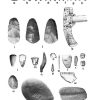 Pre-European Exploration, Prehistory through 1540
Pre-European Exploration, Prehistory through 1540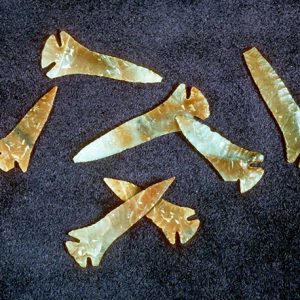 Agee Points
Agee Points 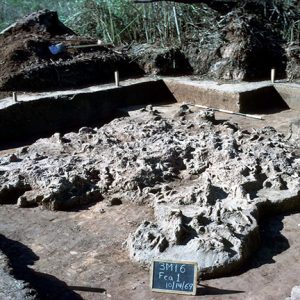 Antler Pile
Antler Pile 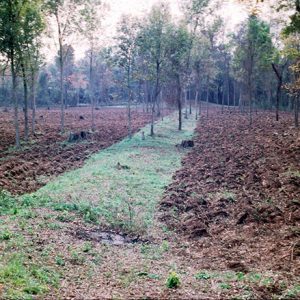 Mound E Causeway
Mound E Causeway  Mound F
Mound F 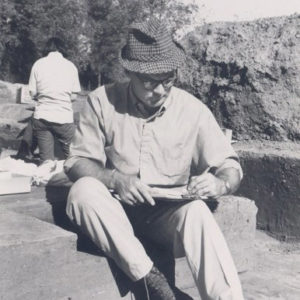 Frank Schambach
Frank Schambach 




Comments
No comments on this entry yet.